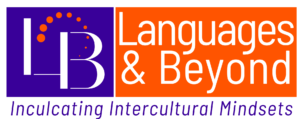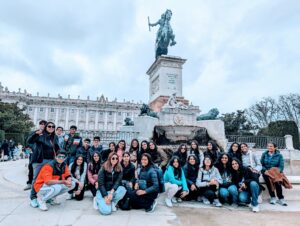If you’ve ever wondered what the fastest way to learn a language is, the answer is clear: immersion. While apps, online courses, and classroom lessons can give you a foundation, nothing compares to the transformative power of being surrounded by the language every day.
Language immersion—living, studying, and experiencing life in a country where the language is spoken—accelerates learning in ways no textbook ever could. Here’s why.

1. Language Becomes a Daily Habit
In an immersive environment, language learning doesn’t stop when the lesson ends. It’s woven into everyday life—ordering food, taking public transport, chatting with locals, or spending time with a host family. Each interaction becomes a mini-lesson, making progress faster and more natural than traditional methods.
2. Real-World Context Aids Retention
Studies show that learners remember vocabulary better when tied to real experiences. For example, learning the word pan while buying bread in Spain or fromage while tasting French cheese creates stronger memory associations. Immersion ensures words are learned in context, not in isolation.
3. Cultural Immersion Enriches Communication
True fluency isn’t just about grammar and vocabulary—it’s also about understanding culture. Through educational travel, students experience local traditions, humor, and social norms. A student in Madrid quickly learns that saying vale (okay) is just as common as gracias. These cultural insights make communication more authentic and meaningful.
4. Confidence Comes with Daily Practice
Fear of mistakes holds many learners back. Immersion changes that by creating countless opportunities to practice—whether perfect or not. Over time, students gain confidence, focus less on errors, and more on connecting. This steady practice builds fluency faster than classroom drills.
5. Faster Progress Than Traditional Learning
Learning in a classroom might take years to reach conversational ability. Immersion compresses that timeline by providing thousands of real-life interactions daily. Within weeks, students begin thinking and responding naturally in the new language—a leap that often takes months (or years) with traditional study.
6. Lasting Impact Beyond the Classroom
The benefits of immersive language learning go far beyond fluency. Students return home with unforgettable cultural experiences—like dancing flamenco in Seville, exploring the streets of Paris, or discovering Berlin’s history. These memories inspire a lifelong love for languages and global learning.
Learn by Living the Language
At Languages & Beyond, we design immersive educational trips that combine structured lessons with real-world experiences, host family stays, and cultural exploration. Our programs don’t just teach students a language—they help them live it.
If you’re looking for the fastest way to learn a language, immersion is the answer.






